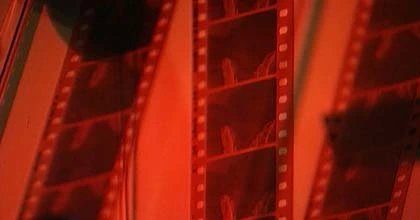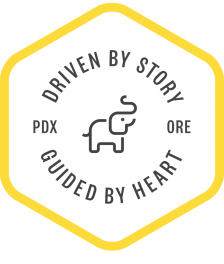
By Elliot Grove
The great thing about working in the creative industries is you get to create a brand around yourself and what you do. Just like Sherlock Holmes wouldn’t have gotten too far without a strategy, so too your film career will hit a brick wall until you construct a plan of attack. You might be able to hoodwink a spy or two, or finesse a lucrative job, but you could awake one morning wondering how you had gotten from A – Z when really all you wanted to do was to go from A – B.
The strategy for your own personal brand works almost the same as the strategy for a COMPANY BRAND .
.
 .
.
Brand strategy is how you communicate what it is you have to offer, be it goods or services. Creating a good, clear brand message creates what marketing people call ‘Brand Equity’ meaning how people perceive you and how much they can expect to pay for your services (ie: sound person, editor, designer) or for your movies.
Good brand strategies what separates great people or great companies from the mediocre. Any salesman worth their salary will tell you that creating a great brand strategy is much more an art than a science. In order to help you create your own brand properly that will guarantee you stay around for ages, or even 20 years like Raindance, let me outline 7 key ingredients to a successful brand strategy. My goal here is to give you some tips as smooth as Bond’s.
1. Your Brand Is Your Business Model
Here’s the urban myth: a brand is about logos, websites and ad copy. Not true. It’s all about how other people think of you and how they feel about you. The film industry is fiercely competitive. How you make people think about you first is the secret to getting ahead. and of course, when they think about you, how can you make sure that they are thinking positive things about you.
Part of this strategy is to analyze what it is that you do the best, or that you enjoy doing the most. Then make sure that this specialty is something you excel at, making everyone wanting your services.
For example:
Gibson sells guitars that are well designed and associated with a whole range of rock stars. Are they the best guitars on the market? Probably not. But people associate Gibson guitars with quality. This means they extend the brand beyond the actual product itself and people are willing to pay a premium. So too, Monty Python is the Rolls Royce of comedy and have created a global brand centred around their quirky comedy. A Monty Python joke, even if not particularly funny, becomes funnier because it’s got the brand behind it.
Gibson sells guitars that are well designed and associated with a whole range of rock stars. Are they the best guitars on the market? Probably not. But people associate Gibson guitars with quality. This means they extend the brand beyond the actual product itself and people are willing to pay a premium. So too, Monty Python is the Rolls Royce of comedy and have created a global brand centred around their quirky comedy. A Monty Python joke, even if not particularly funny, becomes funnier because it’s got the brand behind it.
I learned this lesson last year when we decided to instigate a UK premiere policy for feature films. We noticed two things: Our submissions went up a huge amount. And when we accepted a film, the filmmakers considered a Raindance Film Festival screening had a great more kudos than previously. By valuing our own festival we made ourselves more valuable.
Also, don’t be too specific with your brand message. Volvo has ‘Safety’, Disney has “Magic” and Raindance “Discovery”. We know that Sherlock is always going to solve the crime, but he does it with flair, wit and style that is intriguing and captivating. Decide what it is you want to be known as. Then make sure it is carried through on all your messages.
You can use this same strategy yourself by making sure that your services are deemed to be rock-solid reliable and dependable. As a filmmaker, make sure that your movies are identifiable with a certain style or genre. For example, Both Morgan Spurlock and Michael Moore have created their own brands around their documentaries.
2. Be Consistent
You will find which keywords and values you want associated with your brand (about yourself). The next step is consistency. You need to make sure that everything that you put out about yourself is the same.
Start with what you say to colleagues and friends about yourself and what it is that you do. Be careful how you use your social media: that picture you upload to Facebook, or that newspaper article you tweeted show outsiders a lot about you, what you are thinking and how you react to the world around you. In other words, how your brand is perceived.
Have you merely sent out a link to an article you thought was amusing, but which has no direct link to you and your career branded goal? In this case, you might confuse your audience and dilute your brand. This can weaken the distinction between you and your competitors.
I am not trying and make you paranoid here and insisting that everything you do about yourself need to be sell sell sell. But if you weave synergistic stories and ideas into what you are going then onlookers will get a really good idea of what your values are, as well as how you deliver your services to the industry.
A consistent approach will help people distinguish you from your competitors.
3. Connect Emotionally
People can think of you in a rational way. People used to say of me: “He’s a good scenic artist. He’s fast.” And based on that ‘brand value’ I got work. The more powerful approach is to get people engaged emotionally with you. How do you make them feel? Are you reliable? Punctual? Honest etc. Are you a team player or not.
These types of emotions tie you into the person you are working for far more deeply, and make everyone feel like they are part of a family.
4. Cultivate Loyalty
If you already have a fan club, REWARD them. Make them feel important enough and they will become your brand ambassadors telling everyone how great you are.
them. Make them feel important enough and they will become your brand ambassadors telling everyone how great you are.
 them. Make them feel important enough and they will become your brand ambassadors telling everyone how great you are.
them. Make them feel important enough and they will become your brand ambassadors telling everyone how great you are.
Sometimes you can just say thank you. Successful brands go a step further. My friend film producer Richard Holmes always carried antique french postcards around with him. Bump into him at a gathering or on the street, exchange a few words and a day or two later one of these postcards would drop through the letterbox with a thank you written on the back.
You can never have enough fans or enough loyalty. Pay back as often and as much as you can.
5. Measure success
The best laid plans can end in a train smash. You and your success could become a victim of undeserved misfortune. You have to learn to reject rejection – it is a part of the creative industry’s life style. Use the powerful analytical tools available for free to measure the success and failures of your SOCIAL MEDIA CAMPAIGNS . Learn to see what works so you can repeat it. See what fails so you can avoid repeating the same mistake in the future.
. Learn to see what works so you can repeat it. See what fails so you can avoid repeating the same mistake in the future.
 . Learn to see what works so you can repeat it. See what fails so you can avoid repeating the same mistake in the future.
. Learn to see what works so you can repeat it. See what fails so you can avoid repeating the same mistake in the future.6. Be Flexible
One of the hallmarks of our new digital world is how fast it moves. Looking back at my life in 1992 when I started Raindance, branding and life seemed so much easier. I had an idea. I designed and printed a whole bunch of FLYERS . I delivered them door to door, and 3-4 days later I knew whether or not my idea was a success. Cheques and inquiries either flowed in through the letterbox, or they didn’t.
. I delivered them door to door, and 3-4 days later I knew whether or not my idea was a success. Cheques and inquiries either flowed in through the letterbox, or they didn’t.
 . I delivered them door to door, and 3-4 days later I knew whether or not my idea was a success. Cheques and inquiries either flowed in through the letterbox, or they didn’t.
. I delivered them door to door, and 3-4 days later I knew whether or not my idea was a success. Cheques and inquiries either flowed in through the letterbox, or they didn’t.
Today the reaction time between idea and result can come down to 20 minutes. If your Tweet or Facebook message yields results, you will know within minutes, not days.
Use this speed to your advantage. Withdraw unsuccessful messages and try a new one until you find the message that works. Are there new ways that you can engage your audience. Are there new tricks you can conjure up to get your potential clients and audience members connect with you?
7. Look over your shoulder
I’ve had to keep re-inventing Raindance over the years, while trying to keep the basic brand ie: the basic message the same. It’s been a tricky process and one that I haven’t always managed the best.
And like the movies, when you think it’s safe, suddenly you turn the corner only to discover brand new obstacles and potential misfortune lined up against you. In my case, it seems that every time I get a new strategy figured out, my competitors clone what I am doing, often doing it better than I was.
I used to find this disheartening and would indulge in some self pity about Raindance’s lack of funding and so forth.
I have come up with this strategy: One’s life work will always be full of competitors. I think one should look around every so often to see what the competition is up to. Rather than feeling threatened by the competition, why not see it as a sign of flattery and inspiration. Flattery because it proves that your ideas are sound. Inspiring because it can motivate and make you even better. Remember, what you do is unique and special. Keep highlighting your uniqueness and what it is that you can deliver that is different from the rest of the crowd.
Fade Out
The basic rule of branding is for you to create outstanding content. It’s as simple as that.
Why not develop a huge arsenal of superb content: your views on current affairs (newsjacking), great stories and blogs. Terrific photos, interesting interviews and so on.






